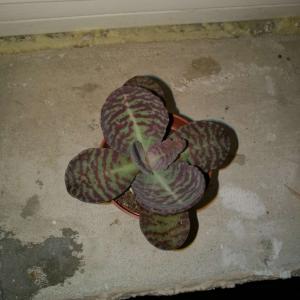文章
Miss Chen
2017年11月21日

Fresh sweet corn is among the most celebrated summertime crop from the home garden, but it is not the only natural variety of Zea mays grown in gardens or farmers' fields in the United States. Other corn types include grain field corn, ornamental/Indian corn and popcorn. Regardless of corn type, all are tropical annual grasses that need a fertile soil that is warm. Lots of sunshine and ambient heat and humidity allows the corn plants to bloom and develop rows of kernels on each cob.

Light Requirements
Always choose a garden location that basks in full, all-day sunlight when growing corn. A full sun location receives direct sun rays for no less than 10 hours daily. Corn plants may still grow, albeit a little shorter and slower, in partial sun, but less than eight hours of sun is not conducive for plants to bloom and form cobs. The heat from sunlight warms the soil in spring adequately to allow seeds to germinate. Sunlight also promotes the best growth and photosynthesis in the limited number of leaves on each corn stalk.
Spacing
Because of corn's need for lots of sunlight, proper spacing of plants and rows ensures growing plants do not shade each other to detriment. The mature height of a corn depends on its variety, which genetically disposes them to reach a maximum height anywhere from 4 to 12 feet. All corn plants are rather narrow, never getting much wider than 20 to 30 inches; leaves tend to grow and orient in one plane on each stalk. Sow seeds 8 to 18 inches apart in linear furrow rows or hills. Space additional rows 30 to 36 inches apart.
Garden Organization
Besides needing to locate a corn patch in a fertile soil in full sun and spacing plants so they don't shade each other, you must also worry about pollination. Corn stalks bear female flowers in silks on the ear while the male pollen flowers occur high up on the stalk's tassel. Corn plants are wind pollinated. Without pollination of the ear silks, corn kernels will not form. Plant corn in multiple rows in a block or grouped format rather than in one singular long row. This ensures wind blows pollen among plants.

Corn Maturation
Lots of sunlight allows the corn plant's narrow and few leaves to make carbohydrates to fuel creation of the kernels on the corn cob. Sweet corn kernels are plump, juicy and immature – the tastiest time to eat them. Conversely, grain field, popcorn and Indian corn must fully mature and then dry on the cob to be ready for harvest and long-term storage. While sweet corn may be harvestable merely 70 days after planting. Corn types that must fully mature and dry kernels and cobs may need a sunny garden plot free from frost for upward of 120 to 150 days after planting.

Light Requirements
Always choose a garden location that basks in full, all-day sunlight when growing corn. A full sun location receives direct sun rays for no less than 10 hours daily. Corn plants may still grow, albeit a little shorter and slower, in partial sun, but less than eight hours of sun is not conducive for plants to bloom and form cobs. The heat from sunlight warms the soil in spring adequately to allow seeds to germinate. Sunlight also promotes the best growth and photosynthesis in the limited number of leaves on each corn stalk.
Spacing
Because of corn's need for lots of sunlight, proper spacing of plants and rows ensures growing plants do not shade each other to detriment. The mature height of a corn depends on its variety, which genetically disposes them to reach a maximum height anywhere from 4 to 12 feet. All corn plants are rather narrow, never getting much wider than 20 to 30 inches; leaves tend to grow and orient in one plane on each stalk. Sow seeds 8 to 18 inches apart in linear furrow rows or hills. Space additional rows 30 to 36 inches apart.
Garden Organization
Besides needing to locate a corn patch in a fertile soil in full sun and spacing plants so they don't shade each other, you must also worry about pollination. Corn stalks bear female flowers in silks on the ear while the male pollen flowers occur high up on the stalk's tassel. Corn plants are wind pollinated. Without pollination of the ear silks, corn kernels will not form. Plant corn in multiple rows in a block or grouped format rather than in one singular long row. This ensures wind blows pollen among plants.

Corn Maturation
Lots of sunlight allows the corn plant's narrow and few leaves to make carbohydrates to fuel creation of the kernels on the corn cob. Sweet corn kernels are plump, juicy and immature – the tastiest time to eat them. Conversely, grain field, popcorn and Indian corn must fully mature and then dry on the cob to be ready for harvest and long-term storage. While sweet corn may be harvestable merely 70 days after planting. Corn types that must fully mature and dry kernels and cobs may need a sunny garden plot free from frost for upward of 120 to 150 days after planting.
0
0
文章
Miss Chen
2017年11月20日

They say that wherever rosemary thrives in the garden, a woman is in charge of the household. Whether or not this is true, if you cook, you will be glad to have a rosemary shrub (Rosmarinus officinalis), with its pungent needle-like leaves so useful in the kitchen. Planted correctly, few herbs are less demanding. Established rosemary growing outside needs little supplemental watering.

Rosemary in the Garden
Rosemary hails from southern Europe and western Asia where it grows wild in sandy soils and rocky scrub. The Mediterranean climate boasts warm summers and mild, dry winters, and these are the growing conditions the evergreen herb prefers. The bush grows outdoors in U.S. Department of Agriculture plant hardiness zones 8 through 10 where it can grow to 6 feet tall with a 4- to 5-foot spread. Rosemary is drought-tolerant, and established garden specimens generally get all the water they need from rainfall.
Watering Rosemary
You'll probably need to provide supplemental water to a rosemary plant in desert climates or in times of drought. Newly transplanted rosemary plants also need watering until they establish strong root systems. In these cases, the key is to provide occasional deep waterings that favor deep root growth rather than surface watering that encourages shallow roots. Don't water on a regular schedule. Instead, let the dryness of the soil tell you when it's time to water. Water the plant when the top few inches of soil feel dry to the touch.
Excellent Drainage Needed
When it comes to rosemary, drainage is as important, if not more important, than correct watering. Your rosemary plant's worst nightmare is to be stuck in wet, heavy soil. If this comes to pass, the shrub won't survive long. Rosemary does not tolerate having soggy soil around its roots and it may get root rot. Its native soil is sandy or rocky, and poor to moderately fertile, but the shrub grows well in any soil with excellent drainage. Rosemary also needs at least six hours a day of direct sun to thrive, but partial shade won't be fatal.

Container-Grown Rosemary
If you grow rosemary in containers, outside or inside, you need to water the plants. But first, make sure the plant has proper drainage. Check for drain holes in the bottom of the pot, then put in a 1-inch layer of gravel. Grow the rosemary in an even mix of sterilized soil, peat moss and perlite. Water the plant thoroughly whenever the top few inches of soil are dry. Take care not to overwater a potted rosemary because this encourages root rot. For outdoor plants, make sure the container is sufficiently large that six hours of direct sun won't dry it out.

Rosemary in the Garden
Rosemary hails from southern Europe and western Asia where it grows wild in sandy soils and rocky scrub. The Mediterranean climate boasts warm summers and mild, dry winters, and these are the growing conditions the evergreen herb prefers. The bush grows outdoors in U.S. Department of Agriculture plant hardiness zones 8 through 10 where it can grow to 6 feet tall with a 4- to 5-foot spread. Rosemary is drought-tolerant, and established garden specimens generally get all the water they need from rainfall.
Watering Rosemary
You'll probably need to provide supplemental water to a rosemary plant in desert climates or in times of drought. Newly transplanted rosemary plants also need watering until they establish strong root systems. In these cases, the key is to provide occasional deep waterings that favor deep root growth rather than surface watering that encourages shallow roots. Don't water on a regular schedule. Instead, let the dryness of the soil tell you when it's time to water. Water the plant when the top few inches of soil feel dry to the touch.
Excellent Drainage Needed
When it comes to rosemary, drainage is as important, if not more important, than correct watering. Your rosemary plant's worst nightmare is to be stuck in wet, heavy soil. If this comes to pass, the shrub won't survive long. Rosemary does not tolerate having soggy soil around its roots and it may get root rot. Its native soil is sandy or rocky, and poor to moderately fertile, but the shrub grows well in any soil with excellent drainage. Rosemary also needs at least six hours a day of direct sun to thrive, but partial shade won't be fatal.

Container-Grown Rosemary
If you grow rosemary in containers, outside or inside, you need to water the plants. But first, make sure the plant has proper drainage. Check for drain holes in the bottom of the pot, then put in a 1-inch layer of gravel. Grow the rosemary in an even mix of sterilized soil, peat moss and perlite. Water the plant thoroughly whenever the top few inches of soil are dry. Take care not to overwater a potted rosemary because this encourages root rot. For outdoor plants, make sure the container is sufficiently large that six hours of direct sun won't dry it out.
0
1


























